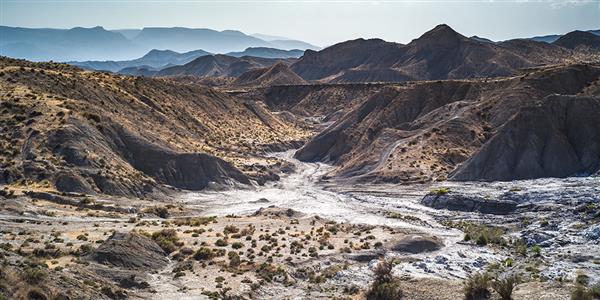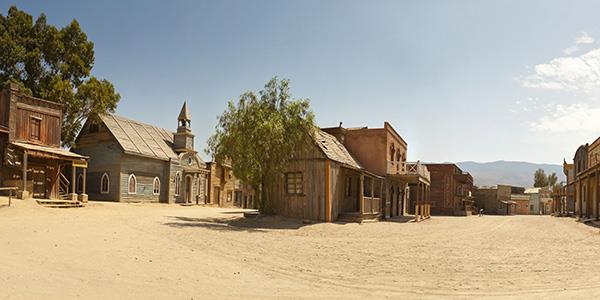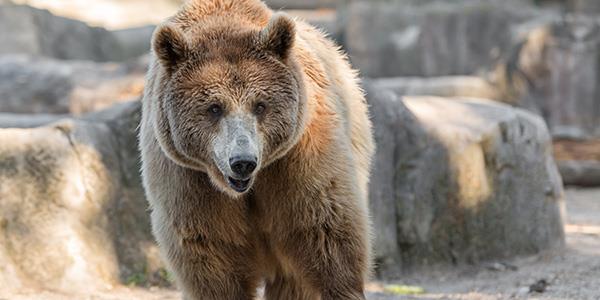
Almería's Tabernas Desert is perhaps best known for its location shoots, as a film set for various big movie blockbusters and Spaghetti Westerns (read about this on our blog here). It has, however, other draws aside from its claim to fame…
Flora
For one thing, the arid, yet beautifully rocky landscape is home to a wealth of well-adapted flora and fauna that are worth seeing. Having learned to thrive in this dry landscape, plants such as sea lavender, otherwise in danger of extinction, grow really well.
The Desierto de Tabernas is the only semi-desert in Europe, which is why it has been used to represent the Wild West on the big screen, and also why it is now a protected natural area. It’s characterised by an almost lunar landscape, with dry riverbeds, slopes and ravines that have been carved by erosion. The Tabernas, with its high altitude up in the mountainous region around the Sierra Nevada, has been shaped by the infrequent but torrential downpours that occur there.

The grasses and succulents that have adapted to growing in these semi-arid climates have developed small firm leaves that can store water and are less affected by the sun. You’ll spot prickly pears and the endemic Almerían rockrose, which has a yellow flower and is only found down in south-eastern Spain.
Due to the nature of the of the landscape, rainwater forces its way through the surface and channels through the rock, creating subterranean stores. Because this is very salty water, saline-tolerant species have adapted to take advantage of the underground water supplies. Saltwort, for example, grows here very well and can be identified by its vertical, spire-like stems and small leaves.
Fauna
The whereabouts of these salty water supplies also affect the distribution of different animals. There are many snakes, such as the ladder snake, and lizards that come out to hunt the insects and small rodents that are able to survive here.
Marsh frogs and natterjack toads have been known to congregate in the ramblas, which are the dry riverbeds, as these can fill temporarily with water following a rare deluge.

Though their nesting grounds tend to be the Sierra Alhamilla, to the south east, you might be lucky enough to spot Bonelli's eagles and other birds of prey soaring overhead whilst on their hunting missions. As an open space, the desert is a great hunting ground for falcons and kestrels too. Species such as the rock thrush and rock sparrow, on the other hand, are much more likely to be spotted closer to the rocky areas while warblers and finches prefer to stick closer to the ground near the ramblas.

Attractions
Seeing the desert wildlife is one thing, but did you know there is a fantastic collection of animals here that wouldn’t normally be found in the Tabernas Desert? On the site of the Mini Hollywood Wild West studios, you will find Oasys Park, a zoological reserve that is home to more than 800 protected or endangered animals. With 4,000 trees and 20,000 plants on site, in the midst of an otherwise dry landscape, this really is an oasis. The reserve is dedicated to conservation and education.

Animals including white rhino, bears, giraffes, lions, hyenas, reptiles and birds are just some of what you can expect to see. There is information on offer and a parrot show, which little ones will enjoy, as well as the mini train. You can even take a walking trail through the impressive landscape if you’re interested in exploring the area at your own pace.
How to visit
The Mini Hollywood and Oasys Zoo are open throughout the year but, depending on the season, opening times do change slightly, so it may be best to double check their website before setting off. Generally they are open from 10am – 6pm every day during the high seasons and just weekends during the colder months.
The desert, of course, is always open and you can drive through it along the A92 which bisects it through the middle north-west to south-east. Or try out a walking route along one of the ramblas; there are a number of rough pathways along many of the seasonal riverbeds. The Sendero Rambla de Tabernas begins on the opposite side of the road to the town of Tabernas and runs almost parallel to the N340, travelling south-west. It’s a linear route of around 8km but there are other ramblas you can detour off to if you wish. Your finishing point is the Puente de los Callejones, which is the arched bridge at the N340-Almería double roundabout.

